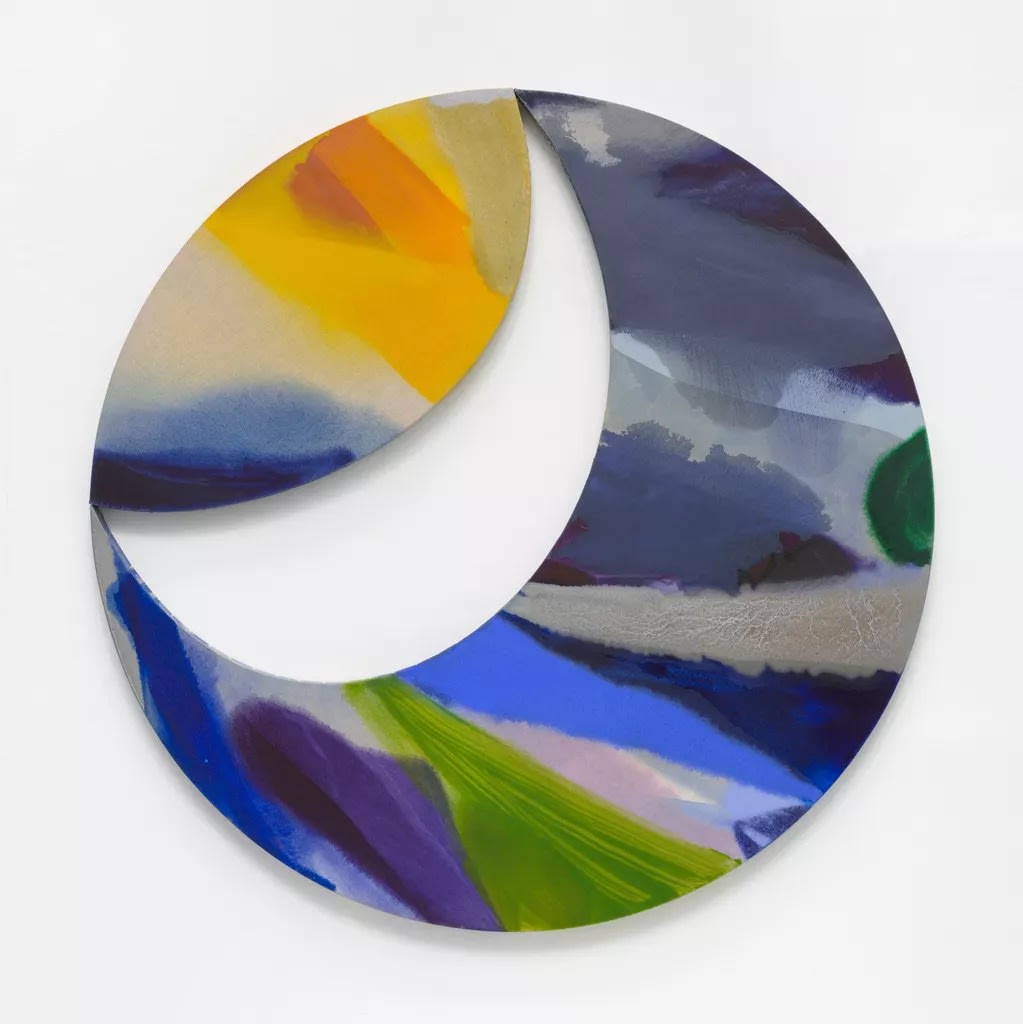Whether it’s early-aughts fashion, mid-century furniture, or vinyl albums, trends have a way of circling back. One of the latest forms making a comeback in the art world is the tondo. Taking its name from the Italian word rotondo, or “round,” tondi were first popularized in 15th-century Renaissance Italy. Inspired by the round reliefs found in wall tombs featuring subjects like the Madonna and Child, some of the most famous tondi from this time period include Michelangelo ’s only surviving completed panel painting, Doni Tondo (ca. 1507), and works by Raphael and Sandro Botticelli.
While many artists had dabbled in the format since the Renaissance, it wasn’t until the 1960s—when American artists like Frank Stella, Sol LeWitt, and Jackson Pollock began playing with shaped canvases—that tondi began to resurface in earnest. Today, tondi seem to be making yet another comeback, adopted by everyone from Manuel Mérida to KAWS. Damien Hirst, in particular, has repeatedly returned to the circular format over multiple mixed-media painting series, including his ashtrays, bugs, butterflies, color charts, spots, kaleidoscopes, and mandalas.
One contemporary artist especially known for tondi is Pamela Jorden, whose large canvases feature woozily fluid swatches of color. Her process often involves painting on linen before stretching it over her frame and then painting it again. During a year spent teaching in her
native Tennessee, Jorden was looking at a lot of modernist painters like Sonia Delaunay and Robert Delaunay and began experimenting with variously sized circular frames. “I was thinking about artists that used geometry in their work but also in a way that was painterly and referencing looking at light and pattern and color,” she said.
Upon returning to California, she met a kite builder turned craftsman who could fabricate custom circular canvas stretchers for her. “He opened up a world of options and possibilities for me,” said Jorden. “At that point, I could really design anything that I wanted to.” Over time, her works have gotten larger, with some human-sized tondi measuring nearly seven feet in diameter. More recently, she has begun to experiment with cutouts and split-circle diptychs, which allow her to both work larger and play with leaning or tilting the components. Jorden’s paintings are flat, but their concave or convex edges create a subtle lenslike effect, invoking the curvature of Classical tondi…
Jorden also views the tondo format as a window. “I’ve thought a lot about Nancy Holt’s Sun Tunnels (1973–76) and how those function to contain and give you a way of looking out into a landscape,” she explained. “I’m really interested in the scale shift of approaching that piece versus actually being inside of it. I’m interested in the movement that happens around the pieces.…The paintings reveal themselves as you move past them.”
(excerpted)

